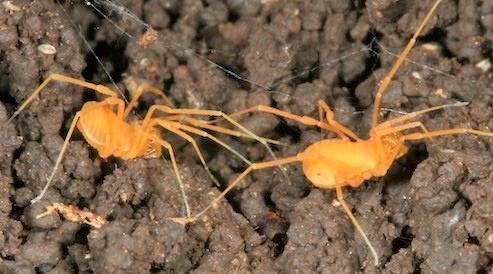The federal government declared parts of John Yearwood’s central Texas farm as critical habitat under the Endangered Species Act, placing private land under federal control.
Based on the Endangered Species Act, Yearwood’s land was tagged as critical habit for the bone cave harvestman after government studies revealed three fissures for the pale orange, eyeless arachnids less than an inch in length.
Since 1871, John Yearwood’s family has owned 865 acres of rocky land in central Texas’ Williamson County. A small portion is tillable, but the vast majority of the slightly rolling, shallow ground is conducive to cattle, rather than row crops.
In 1971, the Texas Department of Agriculture deemed Yearwood’s operation as a “Family Land Heritage Property,” a designation given to ag properties kept in the same family for at least 100 years.
But now, according to federal bureaucrats, a permit to develop any ground within 35’ of the fissure openings would cost Yearwood $400,000. Any activity within 345’ of a fissure’s extension—the underground edge of the cave’s furthest point—would cost $10,000 per acre.
Yearwood stated, “They took away my property’s value with the stroke of a pen for a creature that’s not even endangered.”
Intent on regaining full rights to acreage owned by his family for over a century, Yearwood took his case up the legal chain, but eventually was denied a hearing by the U.S. Supreme Court.
“This was never about a bug,” he says. “This was always about government control.”
The problem began In the early 1990s, when the Texas Department of Transportation expanded a road parallel to Yearwood’s ranch and asked for permission to survey his land.
Yearwood said they were coming on with eminent domain no matter what he said, and when he let on, “everything went off the rails,” noting they had experts and PhDs with their clipboards for geological and biological studies, along with people with government contracts looking for protected species. He said they had people on his land motivated by far more incentives than highway construction.
In 2014, Yearwood filed suit, represented pro bono by Texas Public Policy Foundation (TPPF).
Chance Weldon, senior attorney and director of litigation for Center for the American Future at TPPF, contends the federal government is overstepping constitutional bounds. “The government has created a system beyond the Constitution where the cost of preserving species is on private individuals. There are real-life consequences for people’s homes and land, such as loss of property value.”
In the lawsuit, Yearwood’s claim was direct: The federal government had no power to regulate a species found exclusively in Texas.
When the ESA was passed in 1973, the sweeping authority behind the law derived from Congress’ power to regulate commerce (Commerce Clause), granted in Article I, Section 8 of the Constitution.
The federal government claimed if Mr. Yearwood hurts an insect on his property, he interferes with interstate commerce,” Weldon continues. “That is a crazy theory of federal power. This arachnid only lives in Texas and never moves more than a couple feet from its home. There is no market in other states for this insect. This is a breach of fundamental private property rights and it’s unconstitutional.”
Further, Yearwood faced a federal crime charge of one year in prison and a $50,000 fine for a “take” of the bone cave harvestman. A take, as defined by the feds, is “harassing, harming, pursuing, hunting, shooting, wounding, killing, trapping, capturing, or collecting” members of the bone cave harvestman species “or attempting to engage in any such conduct.”
Yearwood said they turned his land into a permanent government wildlife preserve and made him pay for it, grabbing 600 feet of road frontage and devaluing the property forever and basically stripping him of development rights.
Once into the court system, the merits of Yearwood’s case—the facts on his land—were lost beneath a layer cake of constitutional interpretation, culminating in SCOTUS’ decline to hear his claims.

